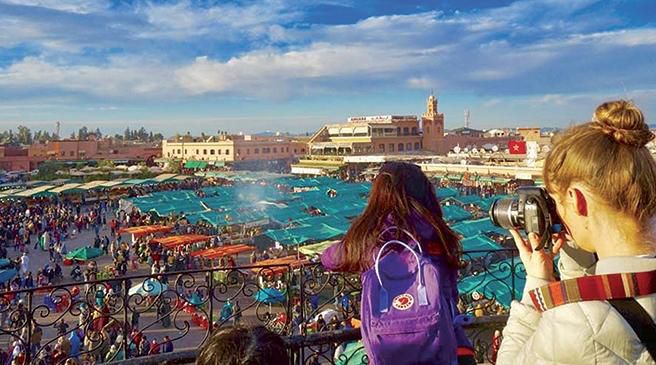Morocco Tops Regional Tourism Rankings: Egypt and Turkey See Declines Amid Surging Travel to the Kingdom

Aldar / Exclusive
Morocco’s tourism sector is experiencing a qualitative transformation that has drawn global attention in 2024. The Kingdom successfully attracted more than 17.4 million tourists this year, marking an unprecedented 20% growth compared to 2023, according to official reports and credible international sources. This remarkable surge in visitor numbers has positioned Morocco among the most competitive tourism destinations in the Middle East and North Africa, effectively reshaping the regional tourism map.
This tourism boom is grounded in an ambitious government strategy aimed at attracting 20 million tourists annually by 2030—a target that now seems well within reach given the increasingly positive indicators. The strategy includes large-scale promotional campaigns targeting European, Russian, and Asian markets, alongside significant investments in tourism and air transport infrastructure, particularly through expanding direct flight networks with numerous global capitals.
One of the clearest signs of this shift in tourism trends comes from a report by Russian newspaper “Pronedra,” which revealed that tourists—particularly from Russia and Europe—have started shifting their travel plans from Egypt to Morocco, triggering what the report described as a state of “panic” within Egypt’s tourism sector, which has long depended on these markets as a primary source of revenue.
Similarly, British newspaper “Express” quoted tourism experts as saying that Egypt is beginning to lose its traditional appeal in the face of Morocco’s rising popularity. Morocco is now globally recognized for its safety, natural diversity, cultural depth, and high-quality hotel services. Tourists increasingly see Morocco as a safer and more modern alternative to the classic destinations they once favored.
In the Russian context, data from the renowned travel platform “OneTwoTrip” indicates that interest in Morocco quintupled in 2025 compared to the previous year, while demand for Egypt grew by only 75%—a significant disparity attributed mainly to the availability of regular, direct flights between Russia and several Moroccan cities, including Casablanca, Marrakesh, and Agadir. This has made travel easier and more convenient for Russian travelers.
Notably, Morocco is not the only beneficiary of this redrawing of the tourism landscape—other countries are clearly experiencing setbacks. Turkey, one of the world’s top travel destinations, has suffered major losses in its tourism sector due to a large-scale boycott campaign launched by Indian tourists in response to political tensions between New Delhi and Ankara. Nearly 200,000 tourist bookings to cities such as Istanbul, Antalya, and Bodrum were canceled, causing a noticeable decline in luxury tourism revenues.
While both Egypt and Turkey are seeing diminished roles in regional tourism, Morocco continues to rise steadily, now widely regarded as a “complete tourism destination” that offers a blend of rich history, stunning nature, modern infrastructure, and cultural openness.
As countries across the region vie for greater tourist numbers, Morocco appears to have found its unique formula for success—delivering a tourism experience that is both authentic and innovative. This reinforces its position as one of the world’s most promising tourism hotspots for the new decade.





